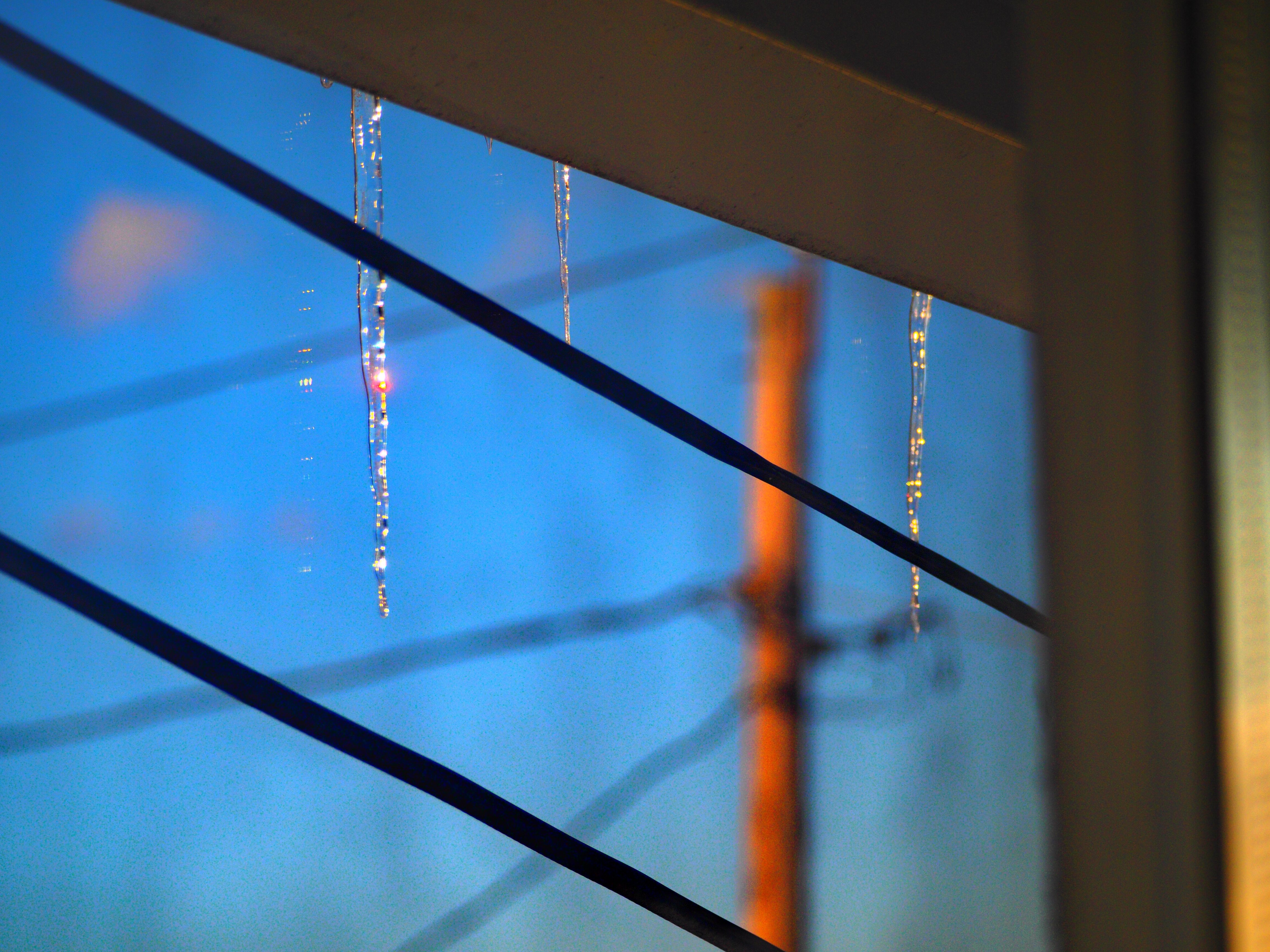-
Posts
44,789 -
Joined
Content Type
Profiles
Blogs
Forums
American Weather
Media Demo
Store
Gallery
Everything posted by LibertyBell
-
It did get us up near average snowfall. It's maddening to get a lot of rain and then 10" or so of snow on the back end and see that people to your east got over 30" lol. I always thought when it rained here the snow would be to the west. How is it possible for it to rain here and for the snow to be to the east?
-

2/13 Significant/Major Winter Storm Discussion & Observations
LibertyBell replied to Northof78's topic in New York City Metro
Probably, but it's still deceptive to say that since they always talk about the snowfall drought of I-95 and always refer to NYC, Philly, Baltimore, DC, etc. al. Plus whenever the "benchmark track" is mentioned it's always in relation to coastal areas around here getting snow. -

2/13 Significant/Major Winter Storm Discussion & Observations
LibertyBell replied to Northof78's topic in New York City Metro
I think them relying so much on the benchmark as a delineator of where it will snow vs where it will rain or mix is a bad idea. We have seen storms that came right across Long Island be mostly snow (Millenium storm) and we've seen offshore storms be mostly rain. It all has to do with the antecedent airmass. I think if you asked experts what determines whether it will snow or not, the number one answer would be the airmass in place as the storm comes in. -

2/13 Significant/Major Winter Storm Discussion & Observations
LibertyBell replied to Northof78's topic in New York City Metro
Yeah but meanwhile their on camera "talent" is still saying (as of 5 minutes ago lol) "big I-95 snowstorm passing over the benchmark"-- makes you wonder how well they know the geography up here? -
we got a lot of rain and it changed to snow later, not a big deal in the city or here.
-
was Nemo (I HATE THAT NAME!) a triple phaser? Why is it that triple phasers are much more likely to hit coastal Nova Scotia but down here they cut inland?
-
Oh nevermind I thought this was for February 1983 this is the anniversary of that storm.... PD2's anniversary is next week.
-
February 1983? I will call this Blizzard Alpha It's the first 20+" snowstorm I ever experienced and it was right after we moved to Long Island.
-

2/13 Significant/Major Winter Storm Discussion & Observations
LibertyBell replied to Northof78's topic in New York City Metro
omg just now on the air they said it is passing right over the benchmark and will be a big snowstorm for the I-95 corridor. Despite whatever their maps show this is what they have been saying for days now with their mouths. -

2/13 Significant/Major Winter Storm Discussion & Observations
LibertyBell replied to Northof78's topic in New York City Metro
Some still think it will pass off the DelMarVa. You guys have to start criticizing the weather channel, they are spreading false info. 1) They have said for days this is a noreaster 2) They have said for days this is passing south and east of the benchmark "ensuring mostly snow for the coast" (their words....) 3) They have said for days now that this is a "monster" I-95 snowstorm. I went at them on social media telling them that they make a good case for why people from the south have no clue what an I-95 snowstorm or noreaster even is and why people in Atlanta have no business making weather forecasts for the northeast. So while we can blame "weenies" the real people to blame, once again, is the media, for spreading false information. -

2/13 Significant/Major Winter Storm Discussion & Observations
LibertyBell replied to Northof78's topic in New York City Metro
It's also frustrating because this is going to become a huge megastorm for Nova Scotia for days at 950 mb. Nothing seems to want to happen at our latitude near the coast though. -

2/13 Significant/Major Winter Storm Discussion & Observations
LibertyBell replied to Northof78's topic in New York City Metro
no blocking until it hits Nova Scotia and bombs out to 950mb for days -

2/13 Significant/Major Winter Storm Discussion & Observations
LibertyBell replied to Northof78's topic in New York City Metro
Let's see if it's wrong and overly warm about these temperatures, because with a low of 37 degrees there will be zero accumulation. What's keeping it from getting colder Don, is the wind coming off the ocean? -

2/13 Significant/Major Winter Storm Discussion & Observations
LibertyBell replied to Northof78's topic in New York City Metro
why does the GFS have a very strange zig zag rain snow line along the south shore lol? -

2/13 Significant/Major Winter Storm Discussion & Observations
LibertyBell replied to Northof78's topic in New York City Metro
a coating to 2 inches seems like a safe bet. Honestly I would be happy with 1 inch. -

2/13 Significant/Major Winter Storm Discussion & Observations
LibertyBell replied to Northof78's topic in New York City Metro
his "feet" must be the size of ants. -
The part about re-examining global teleconnections is really interesting. It means that analogs no longer have any real value.
-
I think we're privileged to have seen 5 all time greats in those two sports in the last 40 years. Montana then Brady then Mahomes in football and Jordan then Lebron in basketball. I ranked Montana higher than Brady because of his perfect superbowl record and having basically thrown four perfect games in the superbowl because he threw no interceptions and faced the greatest defenses of all time under much tougher rules, but I feel like Brady nudged ahead with that last one because he won a superbowl with an entirely new team.
-
People are going to argue this like they argue Jordan vs Lebron. But for those of us who actually saw Jordan play there really is no comparison, nobody but nobody has ever dominated the game the way Jordan did and under much more strenuous conditions too.
-
Don what were the highs at Central Park, JFK and Newark? Did NYC get close to last year's record? Thanks!
-

2/13 Significant/Major Winter Storm Discussion & Observations
LibertyBell replied to Northof78's topic in New York City Metro
a lot of people will not vote even if it's just raining -

2/13 Significant/Major Winter Storm Discussion & Observations
LibertyBell replied to Northof78's topic in New York City Metro
This was a storm that occurred early in the 1900s wasn't it? I remember we discussed it. What was the low for that storm? It dropped 5 inches And we had one much more recently that dropped 5.5 inches with a temp of 33. Both happened in April. -

2/13 Significant/Major Winter Storm Discussion & Observations
LibertyBell replied to Northof78's topic in New York City Metro
I think I just have a sore memory of the really bad ones where it was raining here and freezing rain in January in the Poconos lol. There was lots of that going on. -

2/13 Significant/Major Winter Storm Discussion & Observations
LibertyBell replied to Northof78's topic in New York City Metro
and he's not even a Yankees fan lol. He should be happy the Mets beat the Red Sox with a miracle comeback in 1986 and not worry so much about them lol -

2/13 Significant/Major Winter Storm Discussion & Observations
LibertyBell replied to Northof78's topic in New York City Metro
I'm not sure it was much more north and west of town back in the late 80s and early 90s and again in the late 90s, I think everyone was getting shut out of snow. I had a place in the Poconos since 1986 and there was lots of bare ground there in those time periods with very little snow.



